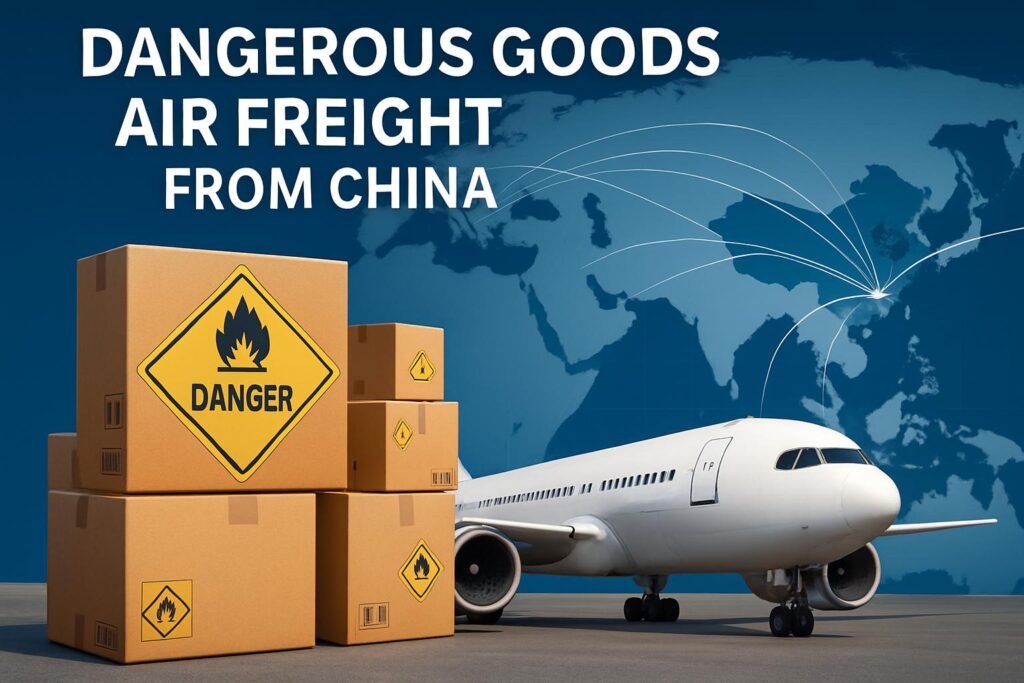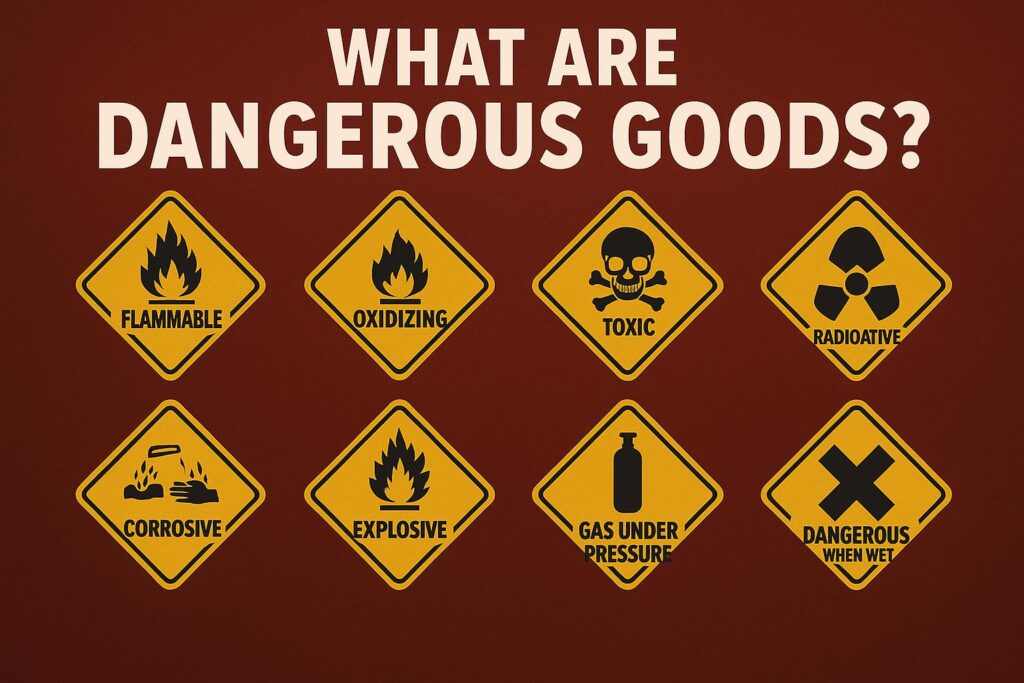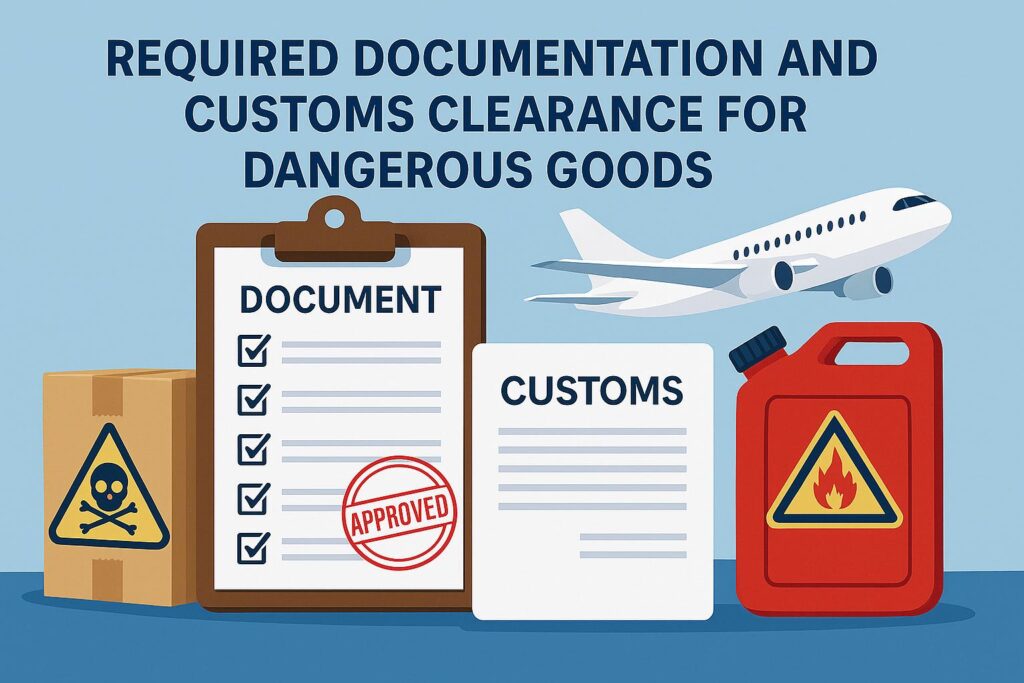Shipping hazardous materials, also known as dangerous goods, requires meticulous planning and strict adherence to relevant regulations. The transportation of these materials poses significant risks to health, safety, property, and the environment if not handled correctly. Therefore, understanding the procedures and guidelines for shipping hazardous materials is crucial for ensuring safe and compliant transportation.
The United Nations, through frameworks like the International Maritime Dangerous Goods (IMDG) Code and the International Air Transport Association (IATA) Dangerous Goods Regulations, provides comprehensive guidelines for the safe transportation of hazardous materials. These regulations cover every detail, from classification and packaging to labeling and documentation, ensuring that all aspects of the shipping process are controlled and compliant.
Adhering to these guidelines is not just about compliance; it is about recognizing the importance of protecting human health, property, and the environment. By following these procedures, shippers can minimize potential risks and ensure that their hazardous materials are transported safely and efficiently.

Why Dangerous Goods Air Freight from China Requires Expertise
Shipping dangerous goods by air freight from China is a complex task that demands strict adherence to international regulations, precise documentation requirements, and meticulous attention to safety to protect the aircraft and its crew. Whether you are transporting flammable liquids, toxic substances, infectious substances, or lithium batteries, it is critical to ensure safe and compliant transportation to your destination country.
Proper shipping dangerous goods procedures involve thorough understanding of the International Air Transport Association (IATA) standards, the United Nations classifications, and each carrier’s guidelines—such as FedEx hazardous materials shipping. Compliance with national regulations and international shipping standards not only protects human health and the environment but also ensures smooth customs clearance and timely delivery. Ensuring compliance with these regulatory requirements is essential to avoid penalties and delays.
In this guide, we will walk you through everything from material safety data sheets to dangerous goods regulations, helping you navigate the transportation process safely and efficiently.
What Are Dangerous Goods?
Dangerous goods (DG) include materials or substances that pose risks to human health, safety, property, or the environment. They are classified based on their hazardous properties, such as flammability, toxicity, reactivity, or infectiousness.
Common Categories of Dangerous Goods
According to the United Nations and the International Air Transport Association (IATA), dangerous goods are divided into several major categories:
Flammable liquids (e.g., paints, perfumes, alcohol-based products)
Flammable gas (e.g., aerosols, butane)
Toxic substances and toxic gas
Infectious substances (e.g., medical waste, clinical samples)
Radioactive materials
Explosives (e.g., fireworks)
Corrosive substances
Miscellaneous dangerous goods (e.g., dry ice, environmentally hazardous materials)
Lithium batteries and lithium metal batteries
Each category requires specific packaging, labeling, and documentation to ensure safe transportation and compliance with international regulations.
Importance of Proper Classification and Documentation
Proper identification of dangerous goods typically requires a material safety data sheet (MSDS) or safety data sheet (SDS). These documents provide detailed information on the chemical and physical properties of the cargo, as well as critical handling precautions and emergency procedures.
Correct classification and complete documentation are essential. They help freight forwarders and carriers apply the right transportation process and prevent safety risks during international transit. Without precise classification, goods may be misrouted, delayed during customs clearance, or even rejected at the destination country.
Following dangerous goods regulations ensures that shipments are handled correctly from the point of origin to final delivery, protecting both people and the environment.

Key Regulations for Dangerous Goods Shipping by Air
Transporting dangerous goods by air freight is strictly governed by both international regulations and national regulations. These rules are designed to guarantee the safe and compliant transportation of hazardous materials, protecting human health, the environment, and property throughout the shipping process.
The key regulatory frameworks include:
IATA Dangerous Goods Regulations (DGR): Issued by the International Air Transport Association, this is the primary manual for air transport of dangerous goods worldwide.
International Civil Aviation Organization (ICAO) Technical Instructions: A global set of rules ensuring proper handling and compliant packaging during air transportation.
International Maritime Dangerous Goods (IMDG) Code: Although focused on sea transport, this code impacts multi-modal shipments.
United Nations Model Regulations: Provide international baseline standards for classifying and transporting hazardous substances, flammable solids, and toxic and infectious substances.
Including specific details in documentation, such as descriptions, quantities, and regulatory information, is vital for ensuring accuracy and preventing issues in logistics.
These regulations demand:
Accurate and complete documentation (e.g., shipper’s declaration, safety data sheet)
Proper labeling and marking according to hazard classes
Use of certified outer packaging and compliant packaging materials
Full training of relevant personnel involved in dangerous goods handling
Implementation of emergency procedures in case of accidents
Strict adherence to these standards is essential for avoiding delays, fines, and potential rejections during customs clearance at the destination country. Mandatory customs inspections require that all packaging, labeling, and documentation are accurate and available to prevent significant delays and fines.
FedEx Hazardous Materials Shipping and Handling Solutions
When it comes to shipping dangerous goods internationally, FedEx offers specialized services designed to meet the industry’s strictest international regulations. Whether you are transporting flammable liquids, toxic substances, lithium batteries, or radioactive materials, FedEx hazardous materials shipping ensures your cargo moves safely and compliantly through the global supply chain.
Key highlights of FedEx services include:
FedEx Hazmat Shipping: Provides end-to-end solutions for businesses shipping regulated dangerous goods worldwide.
FedEx Dangerous Goods Shipping: Supports various classes of hazardous materials, including explosives, flammable gas, and corrosive substances.
FedEx Dangerous Goods Hotline: Offers real-time support and guidance on the shipping process, packaging materials, and required documentation.
FedEx Hazardous Materials Training: Ensures shippers and relevant personnel comply with proper safety measures and handling precautions.
Special categories handled by FedEx include:
Shipping liquids FedEx: Requires proper packaging, outer packaging containment, and adherence to volume limitations.
Shipping paint FedEx: Paints, classified as flammable liquids, must comply with accurate and complete documentation and UN packaging codes.
FedEx Shipping Perfume: Perfumes are flammable and need compliant packaging materials and hazard labels.
Additionally, FedEx training classes are available to help companies better understand the handling of hazardous goods shipments and maintain strict compliance throughout the transportation process.
By leveraging FedEx hazardous goods expertise, businesses can ensure the safe transportation of sensitive cargo to their destination safely, minimizing risk while adhering to international shipping standards.
Special Handling for Different Classes of Dangerous Goods
Each category of dangerous goods requires unique precautions and specific handling techniques during air freight to ensure safe and compliant transportation. Understanding the distinct characteristics of each class is critical to minimizing risks and ensuring strict compliance with international regulations.
For instance, flammable solids like magnesium can easily ignite and cause fires, necessitating specific handling techniques to ensure safety.
Lithium Batteries and Lithium Metal Batteries
Lithium batteries and lithium metal batteries are highly sensitive to temperature and physical damage. For air transport:
Use fire-resistant packaging materials and UN-certified outer packaging.
Ensure proper labeling and attach a material safety data sheet.
Comply with both IATA DGR and carrier-specific rules like FedEx hazardous materials shipping guidelines.
Failure to comply can lead to rejected shipments or safety incidents during transportation process.
Infectious Substances and Medical Waste
Infectious substances, including certain medical samples and medical waste, must be packed in triple packaging systems:
Leakproof primary receptacles
Leakproof secondary packaging
Rigid outer packaging
These shipments require detailed accurate and complete documentation and must meet specific international shipping standards to ensure safe air carriage and protect human health.
Toxic Gas and Toxic Substances
Transporting toxic gas and toxic substances demands extreme caution:
Specialized containers capable of withstanding pressure
Mandatory use of personal protective equipment (PPE) during loading and unloading
Emergency protocols and safety management plans must be in place.
Flammable Liquids and Flammable Solids
Flammable liquids (like paints, perfumes) and flammable solids (such as matches) present high fire risks:
Require temperature-controlled storage and handling
Must be properly segregated from incompatible materials during shipment
Adherence to handling precautions and safety measures is mandatory to prevent accidents.
Miscellaneous Dangerous Goods
This broad category includes items like dry ice, magnetized materials, and environmentally hazardous substances:
Dry ice must be packaged in ventilated containers.
Special considerations apply to hazardous chemicals and hazardous substances that could harm ecosystems if spilled.
Proper classification and documentation are essential to avoid customs issues and ensure delivery to the destination country without delays.
Required Documentation and Customs Clearance for Dangerous Goods
Efficient and compliant shipping dangerous goods by air requires meticulous preparation of necessary documentation. Without proper documentation, your shipment risks delays, fines, or outright rejection by authorities during customs clearance at the destination country.
The key documents required include:
Material Safety Data Sheet (MSDS) or Safety Data Sheet (SDS): Provides detailed information on hazardous properties, safe handling, and emergency procedures.
Shipper’s Declaration for Dangerous Goods: Mandatory for air shipments under IATA DGR.
Commercial Invoice and Packing List: Essential for customs processing.
Outer Packaging Specifications: To confirm compliance with international regulations and carrier requirements.
Labels and Markings: Proper labeling according to UN classification and hazard categories.
It is crucial to ensure that all necessary information is included in the documentation to avoid significant issues and ensure compliance with changing regulations.
Customs authorities in different countries apply national regulations alongside international shipping standards to verify:
Correct classification of the dangerous goods
Compliant packaging and secure sealing
Accuracy of the documentation requirements
An experienced freight forwarder specializing in dangerous goods transportation can guide you through the shipping process, ensuring all documents meet both origin and destination country standards.
Maintaining accurate and complete documentation not only facilitates smooth customs clearance but also ensures that your cargo proceeds safely through every checkpoint, reaching the destination safely without interruptions.
Insurance and Liability in Dangerous Goods Shipping
Insurance and liability are critical aspects of shipping dangerous goods, given the significant risks involved. The transportation of hazardous materials can result in severe damage, injury, or even loss of life if not managed properly. Therefore, having adequate insurance coverage is essential to mitigate these risks.
Carriers and freight forwarders must ensure they have the necessary insurance policies to cover potential damages or losses during the transportation process. This includes coverage for any incidents that may occur, protecting both the shipper and the carrier from financial repercussions.
In addition to insurance, having the necessary certificates and documentation is crucial for proving compliance with regulations. In the event of an accident or incident, the shipper, carrier, and freight forwarder may be held liable for any damages or losses. Therefore, understanding the importance of insurance and liability in shipping dangerous goods is vital.
By taking the necessary steps to minimize potential risks, including securing adequate insurance and ensuring all documentation is in order, shippers can protect themselves and their partners from the financial and legal consequences of transporting hazardous materials.

Choosing the Right Freight Forwarder for Dangerous Goods Air Freight
Selecting a qualified freight forwarder is crucial for the safe and compliant transportation of dangerous goods by air. Given the complexity of handling hazardous goods shipments, only an experienced freight forwarder with specialized knowledge can navigate the strict regulatory environment and ensure smooth delivery across the supply chain.
Key factors when choosing the right freight forwarder include:
Certification and Training: The freight forwarder should have staff trained in IATA dangerous goods regulations and certified in handling precautions for hazardous materials.
Experience with Different Classes: Ensure they are familiar with shipping a wide range of cargo, from flammable solids to radioactive materials and infectious substances.
Strong Carrier Partnerships: A strong working relationship with airlines like FedEx hazardous materials shipping programs helps secure faster and safer bookings.
Customs Clearance Expertise: Knowledge of international regulations and national regulations in both the origin and destination country is essential for minimizing delays during customs clearance.
Documentation Management: A reliable forwarder will ensure all necessary documentation, material safety data sheets, and proper labeling are completed accurately.
It is also important to select a freight forwarder with a strong track record of compliance with environmental regulations and safety standards.
An experienced freight forwarder not only manages the transportation process but also provides valuable risk mitigation strategies, including emergency procedures, route planning for safe transportation, and advice on compliant packaging to meet all international shipping standards.
By partnering with the right logistics expert, shippers can guarantee that their dangerous goods reach the destination safely, maintaining both regulatory compliance and supply chain efficiency.
Best Practices for Safe Transportation of Dangerous Goods
Ensuring the safe transportation of dangerous goods is not solely about following regulations — it requires proactive measures at every stage of the shipping process. Implementing industry best practices protects human health, safeguards the environment, and ensures timely delivery to the destination country.
Here are essential best practices for shipping hazardous cargo:
Safety Management and Emergency Preparedness
Understanding the hazards associated with dangerous goods is crucial for selecting appropriate insurance policies and classifying these goods correctly to mitigate health risks.
Proper Handling and Packaging
Maintaining the integrity of dangerous goods during transport is essential. This includes controlled storage conditions, proper segregation of materials, and accurate inventory management.
1. Proper Handling and Packaging
Always apply proper handling techniques when moving dangerous goods.
Select compliant packaging materials that are tested and certified for specific hazard classes, including flammable liquids, toxic gas, and infectious substances.
Ensure that outer packaging is strong enough to withstand normal transport conditions without leakage or damage.
2. Accurate Documentation and Labeling
Prepare accurate and complete documentation, including the material safety data sheet and Shipper’s Declaration for Dangerous Goods.
Use proper labeling according to the UN classification system to prevent misidentification during transit.
Verify all documentation requirements for the destination country before shipping.
3. Safety Management and Emergency Preparedness
Implement a robust safety management plan, including preventive maintenance and incident response protocols.
Train all relevant personnel on emergency procedures for dangerous goods incidents, including spills, fires, and exposure.
Equip transport teams with personal protective equipment (PPE) appropriate for handling hazardous chemicals and hazardous substances.
4. Strict Compliance with Applicable Regulations
Adhere to all international regulations, national regulations, and own regulations for specific hazardous classes.
Update handling procedures regularly based on evolving international shipping standards and carrier-specific guidelines like FedEx hazardous goods requirements.
5. Choosing Reliable Carriers and Routes
Partner with airlines and shipping companies experienced in dangerous goods transportation.
When possible, select direct routes to minimize handling points and potential risk during the transportation process.
Following these best practices helps ensure compliant transportation of dangerous goods, reduces risks during the shipping process, and guarantees that shipments reach their destination safely without regulatory complications.
Mastering Dangerous Goods Air Freight from China
Successfully shipping dangerous goods by air freight from China requires deep expertise, strict adherence to international regulations, and careful attention to every stage of the transportation process. From proper handling and compliant packaging to preparing accurate and complete documentation, every step is vital for ensuring safe and compliant transportation.
Partnering with an experienced freight forwarder or a dangerous goods freight forwarder can make all the difference in navigating the complexities of customs clearance, regulatory compliance, and carrier-specific requirements like those for FedEx hazardous materials shipping.
Whether you are moving flammable liquids, toxic gas, infectious substances, lithium batteries, or miscellaneous dangerous goods, maintaining strict compliance and following best practices ensures that your cargo reaches its destination safely without delays or penalties.
By applying the strategies discussed in this guide, you can confidently manage your hazardous goods shipments, strengthen your supply chain, and protect human health and the environment.
Choosing the right freight forwarder, preparing the necessary safety measures, and respecting all international shipping standards are the pillars of successful dangerous goods air transportation from China. The insights provided in this guide on the complexities of shipping dangerous goods by air are invaluable for both experienced exporters and newcomers, ensuring safe and efficient transportation.


